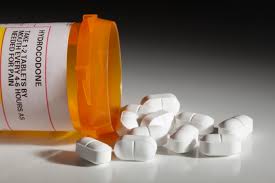Overdosing On Over-Prescribed Opioids

March 6, 2017
During the summer of my sophomore year of high school, I tore my anterior cruciate ligament and meniscus of my left leg. The injury required surgery, and the prescription drugs that came with it to dull the aftermath pain.
Before the surgery, my mom coerced me into watching a 60 Minutes program fixating on athletes who had undergone similar operations and grew addicted to prescription pills, and eventually heroin.
The episode worried me— Was I that susceptible to a viable addiction? How common is addiction as a result of taking prescription pills?
I investigated the issue to see if it was a potential reality or a post hoc affair created to intrigue viewers. I dedicated hours to searching for reliable sources who could help cure my case of curiosity and concern about a possible addiction arising from my post-operative pain killers.
The result: My mom’s apprehensions had become my own.
The over prescribing of post-surgical drugs, such as vicodin, oxycontin, or percocet, is precipitating a dependency on such from the patients, and ultimately contributing to the increase of opioid and heroin addiction.
The dilemma begins with the doctors and surgeons prescribing these incredibly addicting pills. The department of Anesthesiology and Critical Care at the Perelman School of Medicine at the University of Pennsylvania reports an increase of patients being prescribed opioid painkillers for common surgeries. This is a cause for concern as the more people exposed to opioids, the greater the risk of addiction from a massive population.
Opioids become addictive, as when they are taken constantly for a period of time, the brain rewires its nervous system pathways to depend on the pills and becomes unable to function properly without them.
As the rate of prescription of opioids rises, so does the rate of misuse. Emergency room visits for the treatment of prescription pill abuse have skyrocketed 98.4% from 2004 to 2009. This increase is most attributed to the nonmedical use by patients who often acquire a dependency on opioids after a variance of medical procedures.
Not only are opioids tremendously addictive, they are also perilous. Opioids affect every part of the body, from the brain to the heart, and even the bones.
Opioids are considered Central Nervous System (CNS) depressants. The CNS includes the nervous systems of the brain and spinal cord as well as control the body’s ability to breathe and maintain a beating heart. The abuse of opioids lead the Central Nervous System of the body to slow down, and eventually shut down, leading to an overdose or death.
The repetitive consumption of opioids can also lead to bone deficiencies. Osteoporosis, a condition from which the body’s bones become frail from loss of tissue, can be a result from taking opioids on a routine basis. This medical ailment creates an upsurge of liability for bone fractures.
Opioids are harmful on their own, however, they frequently prompt an addiction that often induce abusers to move to more treacherous substances which are easier to obtain— such as heroin.
The appeal to switch from prescription opioids to heroin is a result of the cost and availability of heroin. A single dose of heroin amounts to around $15, which compared to illegally sold prescription drugs at upwards of $50-$80 a pill, is evidently cheaper on the pocket.
Prescription opioids also require something street-dealing heroin doesn’t, a prescription from a doctor. This makes it harder for opioid addicts to obtain the pills they crave, provoking them to find new sources, such as heroin, to satisfy their aspirations to obtain a high.
The National Institute on Drug Abuse reports approximately 80% of heroin users admit to receiving an opioid prescription prior to using heroin. Heroin diminishes the immune system, leads to malnutrition, and leaves an irreversible impact on the liver and kidneys.
The severity of the opioid addiction epidemic in the United States poses the question, why are doctors still prescribing these drugs in such large quantities?
The answer lies with the pharmaceutical companies manufacturing prescription drugs. The industry rakes in $10 billion annually and out-spends their opposition, those who advocate for limits on opioids, through soliciting their pro-drug campaigns. Pharmaceutical companies have spent $880 million dollars over the last decade lobbying and contributing to political campaigns, which is a substantial budget compared to the pro-opioid limitation associations who have cashed in a meager $4 million dollars over same period.
Pharmaceutical companies have deep pockets with political allies in government positions across the country and have been influencing the rise of opioid prescriptions and consequently been the principal purpose for the increase in opioid and heroin addiction

